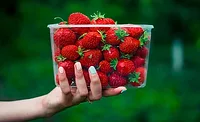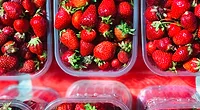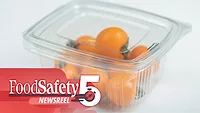EU Regulation Limits PFAS in Food Packaging, Bans Single-Use Plastic Packaging for Produce

Image credit: azerbaijan_stockers via Freepik
New EU plastic packaging and waste regulations have been published, which limit per- and polyfluoroalkyl substances (PFAS) in food packaging, ban single-use plastics for fruit and vegetables under a certain weight, and set forth other changes. Regulation (EU) 2025/40, also known as the Packaging and Packaging Waste Regulation (PPWR), has transition periods for different requirements beginning as early as August 12, 2026.
PPWR amends Regulation (EU) 2019/1020 and Directive (EU) 2019/904, and repeals Directive 94/62/EC. The regulation is mandatory for EU Member States.
PFAS and Substances of Concern
Regarding PFAS, PPWR will prohibit “forever chemicals” in food packaging in concentrations greater than 25 parts-per-billion (ppb) for any PFAS measured with targeted PFAS analysis (excluding polymeric PFAS), 250 ppb for the sum of PFAS measured as the sum of targeted PFAS analysis (excluding polymeric PFAS), and 50 parts-per-million (ppm) for PFASs (including polymeric PFAS). This regulation will apply to food contact packaging placed on the EU market by August 12, 2026.
Existing limits for lead, cadmium, mercury, and chromium present in packaging or packaging components are retained in PPWR. The regulation also keeps the recent EU ban on the use of bisphenol A (BPA) in food contact materials.
Single-Use Plastics for Produce
PPWR also prohibits single-use plastic packaging for unprocessed, fresh fruits and vegetables weighing less than 1.5 kilograms (kg), with exceptions when there is a demonstrated need to mitigate water or turgidity loss, microbiological hazards, physical shocks, or oxidation, or when there is no other possibility to avoid commingling of organic and non-organic produce. This regulation will apply from January 1, 2030.
Single-Use Plastics in Hospitality and Foodservice Operations
Also applicable by 2030, single-use packaging will be prohibited for certain foods and beverages at hotels, restaurants, and catering establishments, such as those consumed on-site and containers for individual portions or servings (e.g., coffee creamers, sugar packets, and condiment packets). The regulation states that consumers should always have the option to purchase food and beverages for takeout in reusable containers or in their own containers, under conditions that are no less favorable than those applicable to food and beverages offered in single-use packaging.
By February 2027, hotels, restaurants, and catering establishments must provide and inform consumers about the option to serve food and drink in the customer’s own takeout containers for no extra charge. By February 2028, the sector must provide and inform consumers about a reusable takeout container option at no extra charge.
Looking for quick answers on food safety topics?
Try Ask FSM, our new smart AI search tool.
Ask FSM →
Recyclability
Requirements for recyclability and the amount of recycled content in plastic food packaging are also laid out in PPWR. Specifically, all packaging must be recyclable by January 1, 2028, with some exceptions for infant and follow-on formula, foods for medical purposes, and processed cereal-based foods and baby foods.
Additionally, by 2030, polyethylene terephthalate (PET) food packaging and food packaging made from plastics other than PET must comprise 30 percent and 10 percent recycled materials, respectively (this excludes single-use beverage bottles). By 2040, PET and non-PET plastic food packaging must both comprise 50 percent recycled materials (except single-use beverage bottles). Single-use beverage bottles must comprise 30 percent and 65 percent recycled materials by 2030 and 2040, respectively. These requirements will not apply to compostable packaging or packaging made of less than 5 percent plastic.









